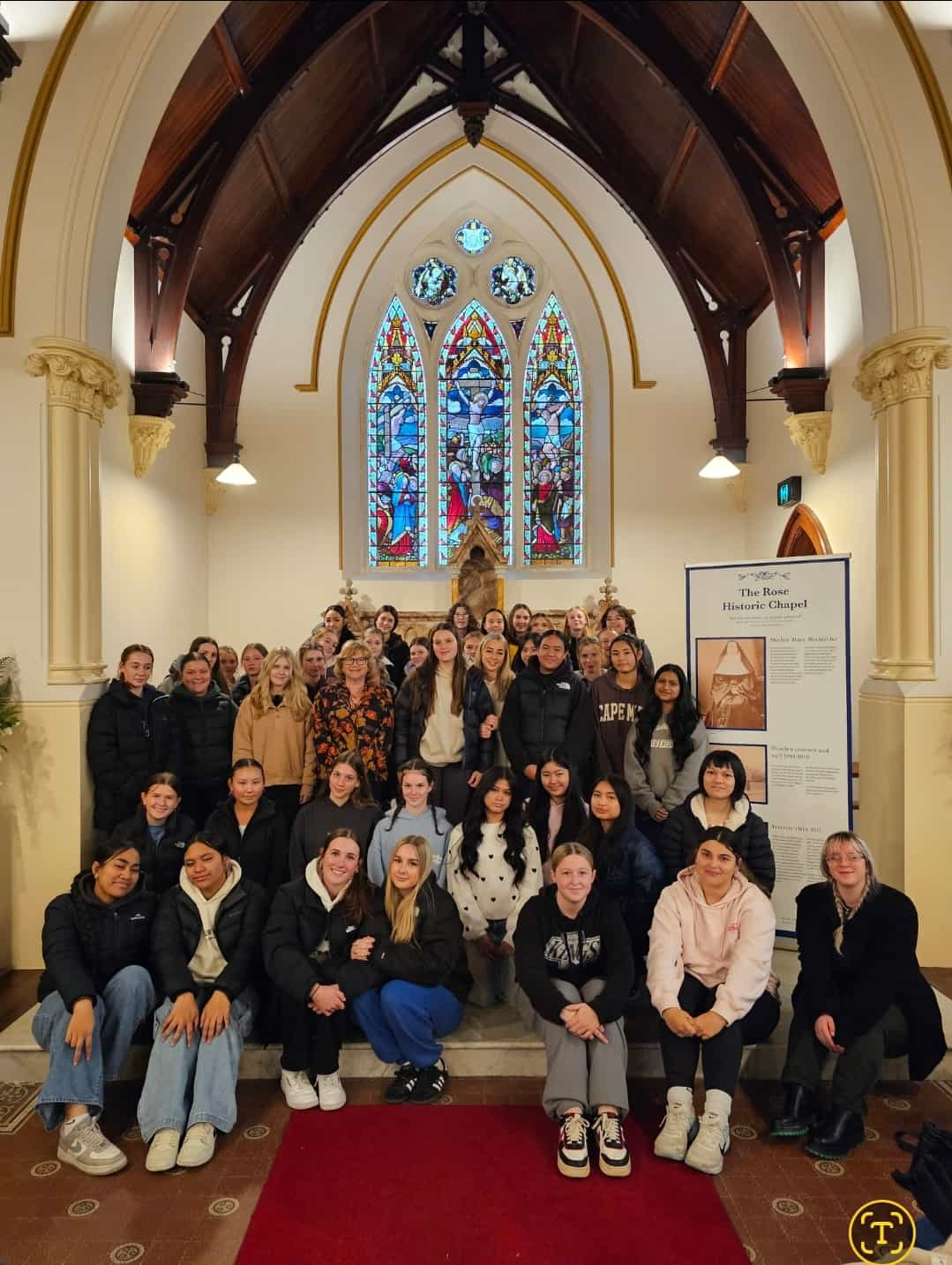
Art students find inspiration in Marian's history

As part of the new Level 1 NCEA curriculum in Art the students are investigating the Marian at Māhutonga cultural narrative that was gifted to us by Ngāi Tahu, and our Catholic Special Character.
Recently, 41 Level 1 Art students along with Ms Harmer-Campbell and student teacher Miss Mills embarked on a day trip exploring our local area and historic sites that are significant to us here at Marian College. This is a chance for them to connect with the people, places, and stories that have contributed to our school history and who we are today at our new school site.
Our first stop was the Historic Rose Chapel in the central city, which was the original Chapel and convent site for the Mercy sisters in Christchurch. It was also the original site of St Mary’s College which is one of the schools that joined to create Marian College.
Susan Harding, Chair of the Rose Historic Chapel Trust, kindly gave up her time to come along and speak to the students about the history of the Chapel and the surrounding site.
She shared her extensive knowledge of the beautiful Chapel windows, each with their own detailed stories, and the girls were in awe of the exquisite Rose window that was restored to its original glory after being destroyed in the Canterbury earthquakes.
The Chapel itself was created in honour of Mary, Mother of Jesus, and there is intricate symbolism celebrating her in multiple ways woven into many aspects of the Chapel design. After Susan’s presentation the students explored the site, took photographs, and made drawings and rubbings to document their learning experience.
After the Rose Chapel we jumped on the bus and headed to the Travis Wetlands for lunch and a walk around the track to explore this significant local place.
Ōruapaeroa is the traditional name generally applied to the extensive network of wetlands that once existed throughout the Christchurch suburb of New Brighton, of which only Travis Wetlands now remains. Ōruapaeroa was one of the numerous kāinga mahinga kai (food-gathering places) located throughout the wetlands surrounding the Ōtākaro (Avon River) and Ōpāwaho (Heathcote River).
Ōruapaeroa supported an abundance of native fish and birdlife, and was an important kāinga mahinga kai for local Ngāi Tahu hapū and whānau. It is significant to us at Marian, as many of the native plants and birdlife connect to our Marian at Māhutonga cultural narrative.
The art block at Marian is actually named ‘He ToeToe’ after the native plant that is abundant in this area.
Toetoe stems were traditionally used by Māori in the creation of tukutuku, mana aute (kites), in housing (wall linings and mats), and it also had several traditional medicinal uses.
The gift of this name was inspired by the whakataukī, “He toetoe anō te toetoe, he raupō anō te raupō, he kākaho anō te kākaho, otiia mā te ringa tangata e raweke ana mea ka kīia ai he whare.” This translates to mean “Toetoe is just toetoe, raupō is just raupō, and toetoe stems are just toetoe stems, but by human hands manipulating those things, a house is created.” Creativity turns the plain into the beautiful, and art, craft, and textiles have long been celebrated in traditional Māori art.
Learning outside the classroom and experiencing these places first hand has added a rich layer to the student's visual research inquiries.
Kalina Harmer-Campbell, Teacher In Charge of Visual Art
Article added: Thursday 06 June 2024


Contact Details
General Enquiries:
Attendance Matters:
attendance@mariancollege.school.nz
AtFinancial Enquiries:
accounts@mariancollege.school.nz
Postal Address
2 Lydia Street
Northcote
Christchurch 8052
Ch